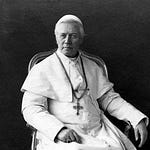St. Charbel memorial July 24th, 2024
Today we remember Saint Charbel, a Maronite Catholic priest, monk, and hermit who lived in 19th Century Lebanon and was beatified by Pope Paul VI in 1965.
-He is been called the Padre Pio of the East. Mainly for his miracles, and spiritual gifts.
-Let me tell you more about this not well known saint.
Jousef Antoun Makhlouf was born in the village of Bekaa Kafra, North Lebanon.
-The youngest of five children, he was baptized into the Maronite Rite of the Catholic Church.
-The Makhlouf family lived in the highest mountain village in Lebanon and were peasant farmers.
From a young age, Jousef lived a holy and devout life.
-Two of his uncles were hermits, and Jousef was inspired by their example.
-As a youth, he tended the cattle and often spent long periods of prayer in the wilderness while his cattle grazed.
-He was especially devoted to the Blessed Virgin Mary and set up a shrine to her in a nearby cave.
-From an early age, he knew God was calling him to the priesthood and the monastic life, especially as a hermit.
In 1851, at the age of twenty-three, Jousef left his family, never to return, and entered the Monastery of Our Lady in Mayfouq, of the Maronite Catholic Church.
As a newly professed monk, Jousef took the name Charbel, after Saint Charbel the Martyr, a second-century military officer who was martyred in Antioch during a persecution by the Roman Emperor Marcus Aurelius.
-As a monk, Brother Sharbel longed to be a hermit and made the request to his superiors many times.
-For the first twenty-four years of his religious life, his superiors required that he live in community with the other monks.
-He was first transferred to the Monastery of Saint Maroun in Annaya where he professed his vows, was then sent to the Monastery of Saints Cyprian and Justina where he studied theology and philosophy, was ordained a priest in 1859 at the age of thirty-one, and returned to the Monastery of Saint Maroun where he remained for the next sixteen years.
Though some monks lived as hermits, that vocation was reserved for those who proved themselves capable of such solitude and asceticism.
-In 1875, at the age of forty-seven, Father Charbel was given permission to enter the Hermitage of Saints Peter and Paul to live as a hermit.
He lived in this Hermitage, where he spent the next twenty-three years in solitude, embracing a strict regime of daily prayer, manual work, and severe asceticism.
Fr. Charbel remained for long hours in adoration, almost continuously on his knees.
-His brother monks have even witness him levitate in prayer.
-He would go into a state of recollection, absorbed in deep meditation.
He always walked silently, his gaze downcast and his face hidden.
-People came to visit him and He helped everyone anyway he could, and acted cheerfully.
-St. Charbel's life bore many similarities to that of Padre Pio, with abundant grace, miracles and divine intercession.
In 1898, at the age of seventy, Father Charbel suffered a stroke while offering Mass and died eight days later on Christmas Eve.
Though Saint Charbel lived a life of extraordinary holiness, it wasn’t until after his death that his holiness became well known beyond the walls of the monasteries.
-After his burial, light was seen shining forth from his grave.
-Also an miraculous oil came from his coffin that healed people.
-This phenomenon drew the attention of many villagers who braved the cold and snow to see this mysterious light.
-After four months, permission was granted by the Church authorities to exhume his body.
-To the wonderment of all, his body was found to be completely incorrupt.
-His skin and joints were like one who was sleeping, soft and flexible.
-Ever since Charbel’s burial, those who have visited his grave have attributed many miracles to his intercession.
-This was especially the case in the 1950’s when he they exhumed his body again and he was found incorrupt still after fifty years!
-At that time, the monks started to keep track of miraculous cures that were attributed to Father Charbel’s intercession.
-Within two years, they had a list of more than 26 thousand reported cures.
-Devotion to him and his incorrupt body spread rapidly.
-The devotion, coupled with reports of numerous miracles, led to a new evangelization across Lebanon.
Now, God uses us all in varied ways.
-St Charbel was used after his death to evangelize Lebanon and beyond. In life, he was deeply united to God.
-He responded to his vocation as a hermit, living a life of daily penance, sacrifice, deep prayer, and humble service as a priest.
-As a result, he became one of the most influential saints of the past century.
-St Charbel did great things for the simple reason that he prayed and followed the will of God.
-Each of us is capable of doing the same.
-Ponder God’s will for your life today and resolve to fulfill that mission without any hesitation.
-Doing so will enable our divine Lord to do great things through you in ways that you might not ever even know until Heaven.
St. Charbel… pray for us.
In the name the Father and Son….








Share this post